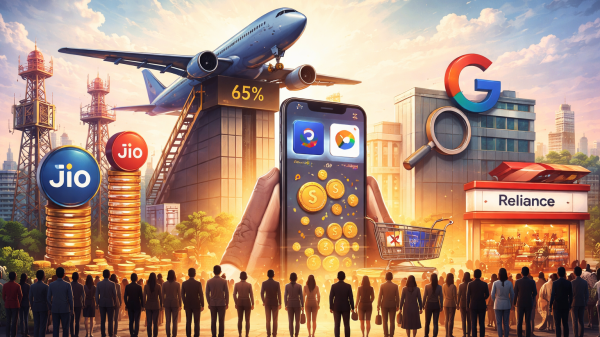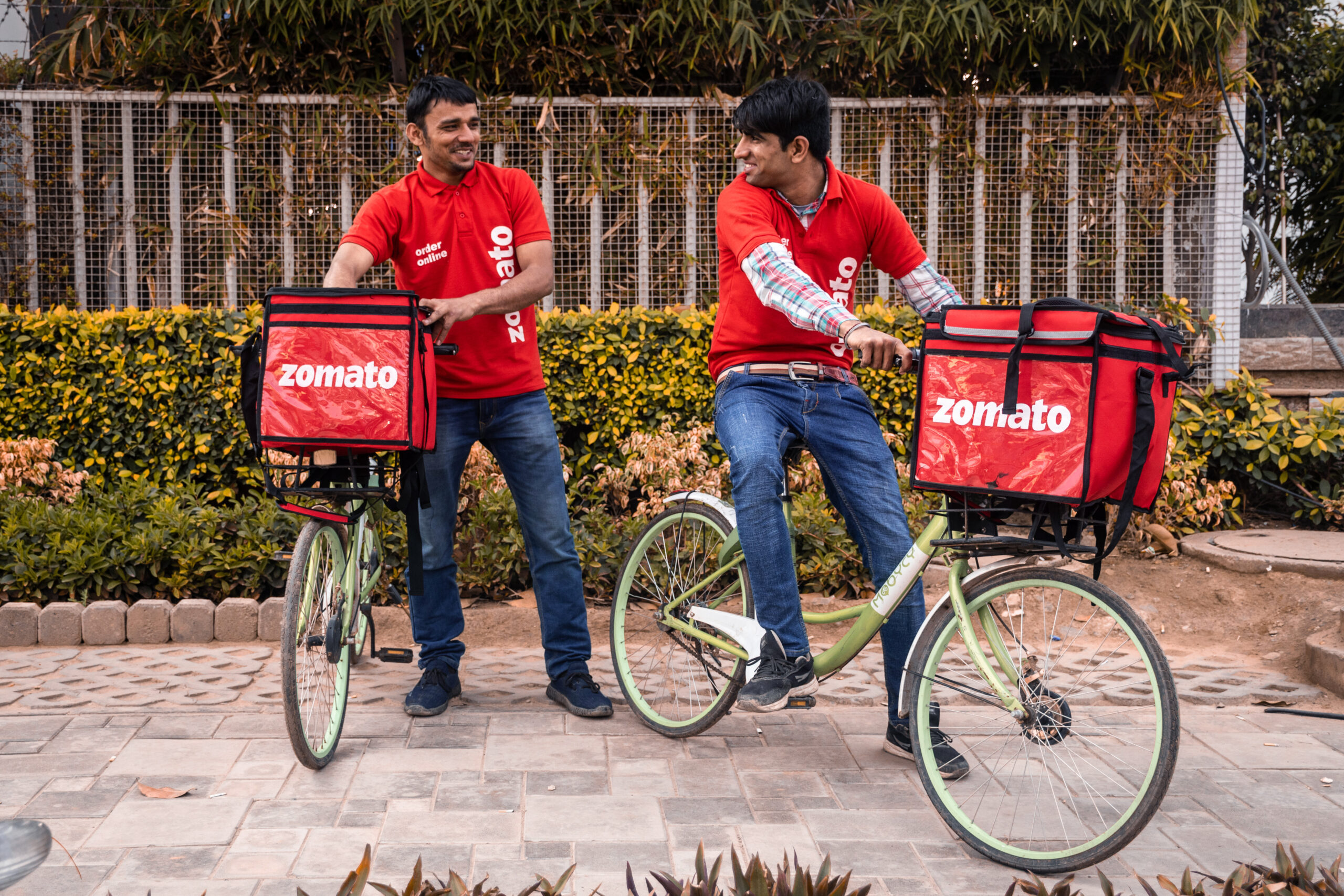By Sarthak Goswami
India’s gig economy has become a major job engine, driven by soaring demand for ultra-fast deliveries.
The number of gig workers reached 12 million in FY 2024–25, up from 7.7 million in 2020–21, and could rise to 23.5 million by 2029–30, making up nearly 7% of the non-agricultural workforce.
Quick-commerce alone was worth $3.34 billion in 2024, forecast to reach almost $10 billion by 2029.
Platforms such as Blinkit, Zepto and Swiggy Instamart dominate this space: Blinkit processes 1.2 million daily orders (46% share), Zepto has 29%, and Instamart 25%.
Together, these companies handle the majority of India’s quick-commerce orders, though competitors like BigBasket and Flipkart Minutes are scaling up.
Reflecting this growth, Zomato (parent of Blinkit) and Jio Financial Services were added to India’s Nifty 50 index in March 2025, replacing Britannia and BPCL.
Swiggy was added to the Nifty Next 50 during the same reshuffle. These inclusions underline growing investor confidence in the quick-commerce sector.
In FY 2024–25, the sector’s gross order value stood at ₹64,000 crore, projected to rise to ₹2 lakh crore by FY28. This boom has created avenues for millions—yet for many delivery workers, earning a reliable income remains a challenge.
Kashan: “I earn ₹800–1,200 a day”
Kashan, who worked for Blinkit before moving to Zepto, says the job offers much-needed freedom.
“There is no headache or pressure from anyone. You open the app, log in, select your time slot, and work during that time. For every order, you earn a fixed amount,” he explains.
He says that part-time riders can make ₹800–1,200 a day, with a base payment per order plus additional pay for longer-distance deliveries. Payouts vary by city and time. “If I select a 7–8 pm slot and complete five orders, I can earn ₹100–150. But if I don’t go online for an elected slot, there is a penalty,” he notes.
Blinkit revised its base payout to ₹15 per order in April 2023, a change that led to protests in Delhi-NCR and Pune. Incentives and distance-based payments now form a critical part of riders’ earnings.
Zubair: “The first days were encouraging”
Zubair joined Zepto just three days before being interviewed.
“In the past three days, I have earned around ₹1,200 each day. If you have your own vehicle, it’s easier—but you can also lease an EV or an E-rickshaw. It does require hard work though because to earn more, you have to ride all day, whatever the weather,” he says.
Platforms require minimal qualifications—just a smartphone and access to a bike or leased vehicle—which attracts both students and part-timers. Still, full-time riders often put in 12–15 hours per day to earn enough.
Aakash: “Every kind of customer”
Aakash, a rider for Swiggy Instamart, highlights the pressure from customer ratings.
“Once, a customer scolded me and gave a low rating because I didn’t carry a small clip in a big paper bag. Ratings can affect your account, even if the issue is such a small matter,” he shares.
Weather is another obstacle. “I want to earn more, so I ride even in heavy rain. Companies pay extra during those periods, but waterlogging makes it unsafe. Customers still expect delivery within minutes, which often isn’t possible,” he says.
Aakash estimates his monthly earnings at around ₹30,000, working 9-10 hours a day, 5–6 days a week. He relies heavily on incentive pay and surge rates to boost his income.
The more you work, the more you earn
These platforms pay per order, so income rises with order volume. Many riders put in long hours to reach targets set by apps. Yet missing an elected slot or getting low ratings can bring penalties.
Full-time partners often work in 12–15 hour shifts, especially during peak hours or festivals.
One survey found that 56% of workers report high job satisfaction due to flexibility and the ability to work across platforms, while 78% still earn less than ₹2.5 lakh a year. These figures highlight the income gap for a large share of India’s delivery workforce.
Worker protests and slow policy change
Delivery partners across platforms have staged several protests demanding better pay and safety. Blinkit riders struck in April 2023 after pay cuts and again in April 2025 in Varanasi, pressing for heatwave-ready uniforms and shaded waiting areas.
Workers report that account suspensions are common during such actions.
Similar protests have occurred at Swiggy and Zomato in cities like Chennai, Kolkata and Bengaluru since 2019. Zomato introduced resting points for delivery workers in 2023 and reversed a fleet segregation plan after public backlash.
Urban Company cut partner commissions and penalties following protests in 2021.
At the state level, Rajasthan passed the Gig Workers (Registration & Welfare) Act in 2023. Telangana announced a ₹5 lakh accident insurance plan in 2024, though reports indicate the coverage lapsed and has yet to be renewed.
Karnataka formalised its platform-based gig workers bill in 2025, bringing mandatory insurance coverage.
However, no national law guarantees minimum pay or job security, and state-level implementation remains uneven.
The future of delivery work
As Amazon Now and Flipkart Minutes enter the space, quick-commerce companies are ramping up competition. Analysts expect gross order value to reach ₹2 lakh crore by FY28, tripling in three years.
Delivery jobs continue to draw workers seeking flexibility—more than half of them report being satisfied with their work. But most earn under ₹2.5 lakh a year and rely heavily on incentives, facing uncertainties like rating penalties and earnings volatility.
As Kashan says, “If you want to earn ₹30,000–40,000 a month on your own schedule, delivery work is a good option.” But with gig employment projected to reach 23.5 million by 2029–30, questions about long-term sustainability remain.
(Sarthak Goswami is an intern at Invezz in New Delhi, currently pursuing a BA (Hons) in Journalism from Maharaja Agrasen College, University of Delhi. He specialises in geopolitics, the economy, and new media, and is also the founder and editor of Beats in Brief and Queats Media.)
The post Gig workers power India’s 12M strong quick-commerce boom: but are they really winning? appeared first on Invezz
























